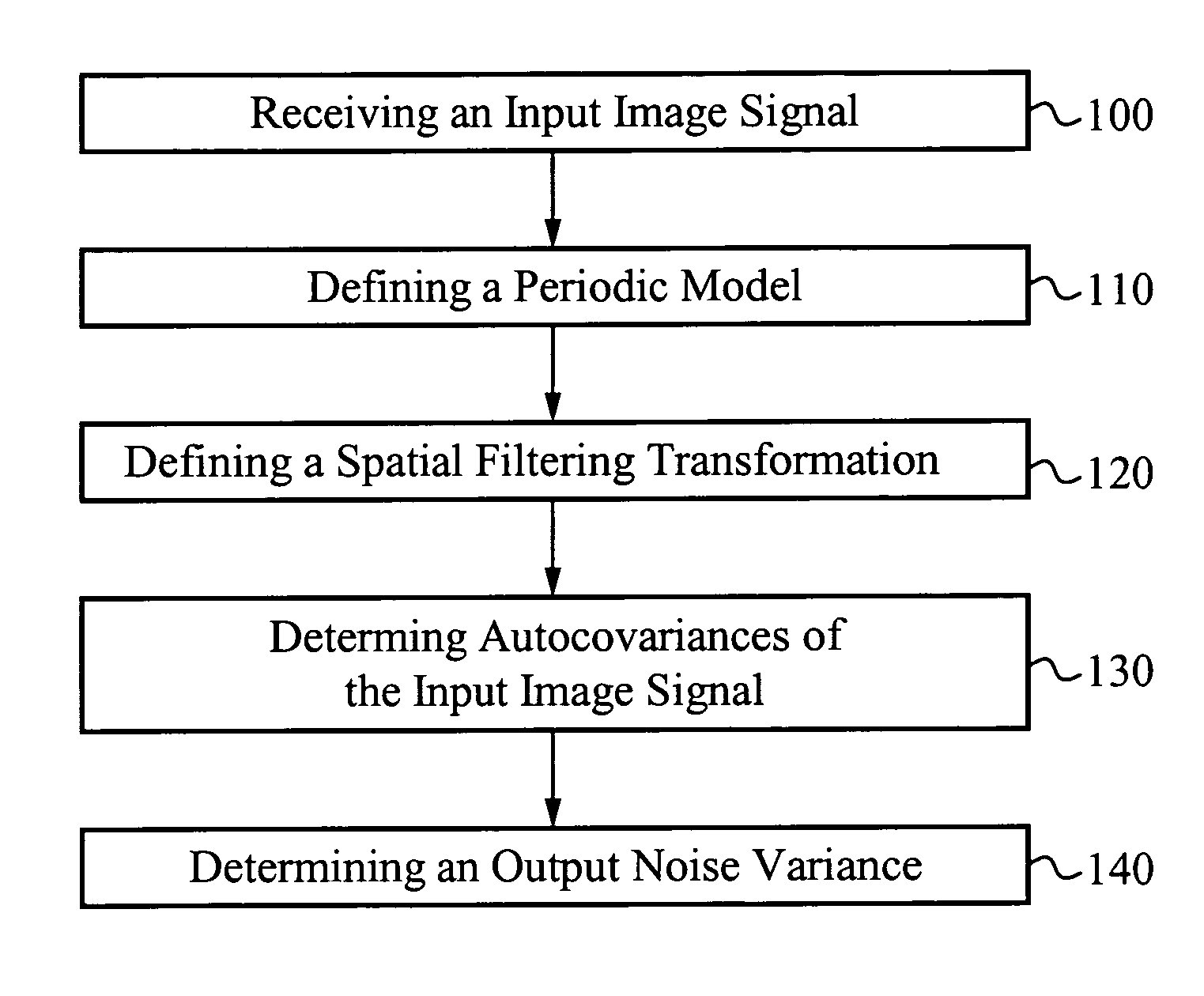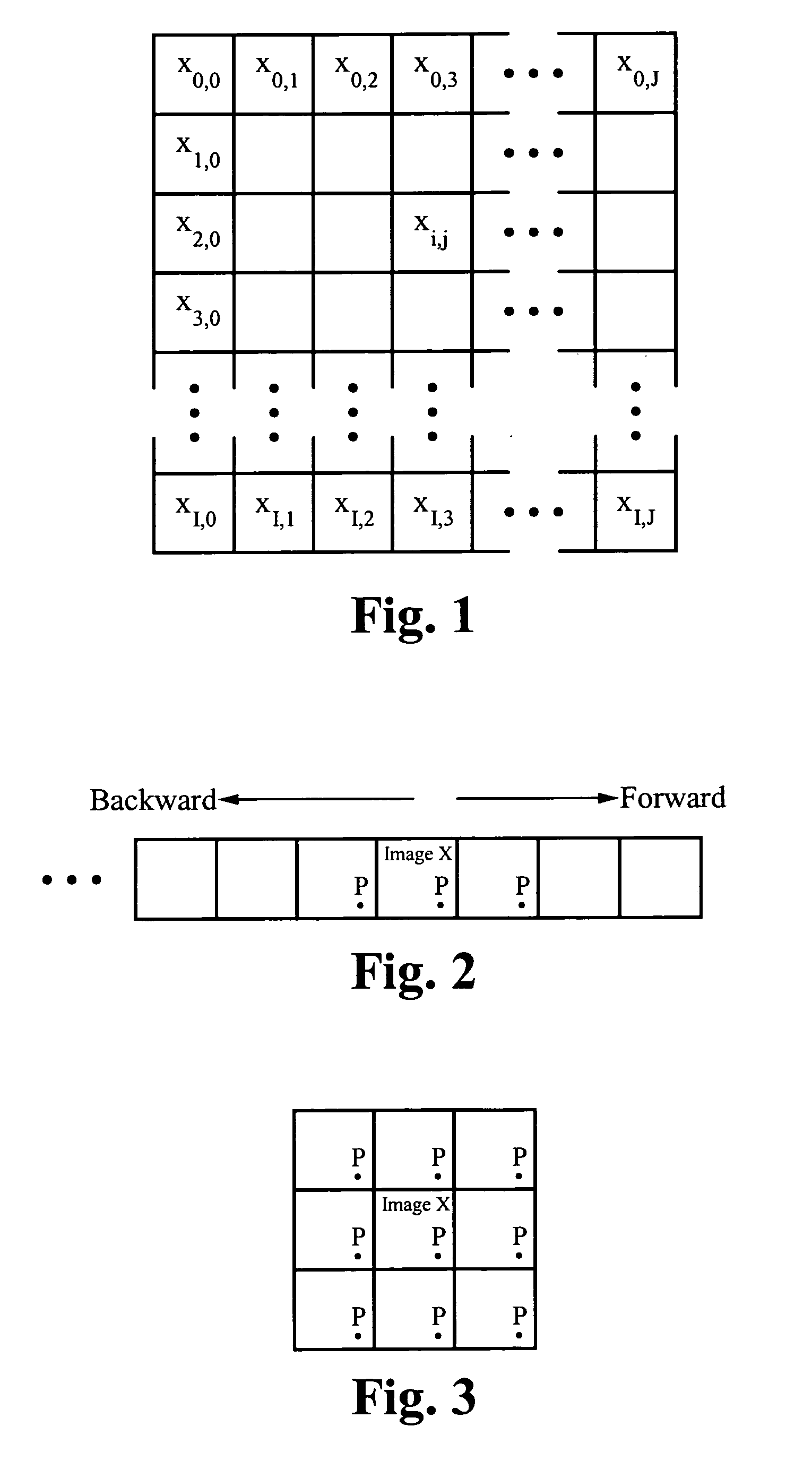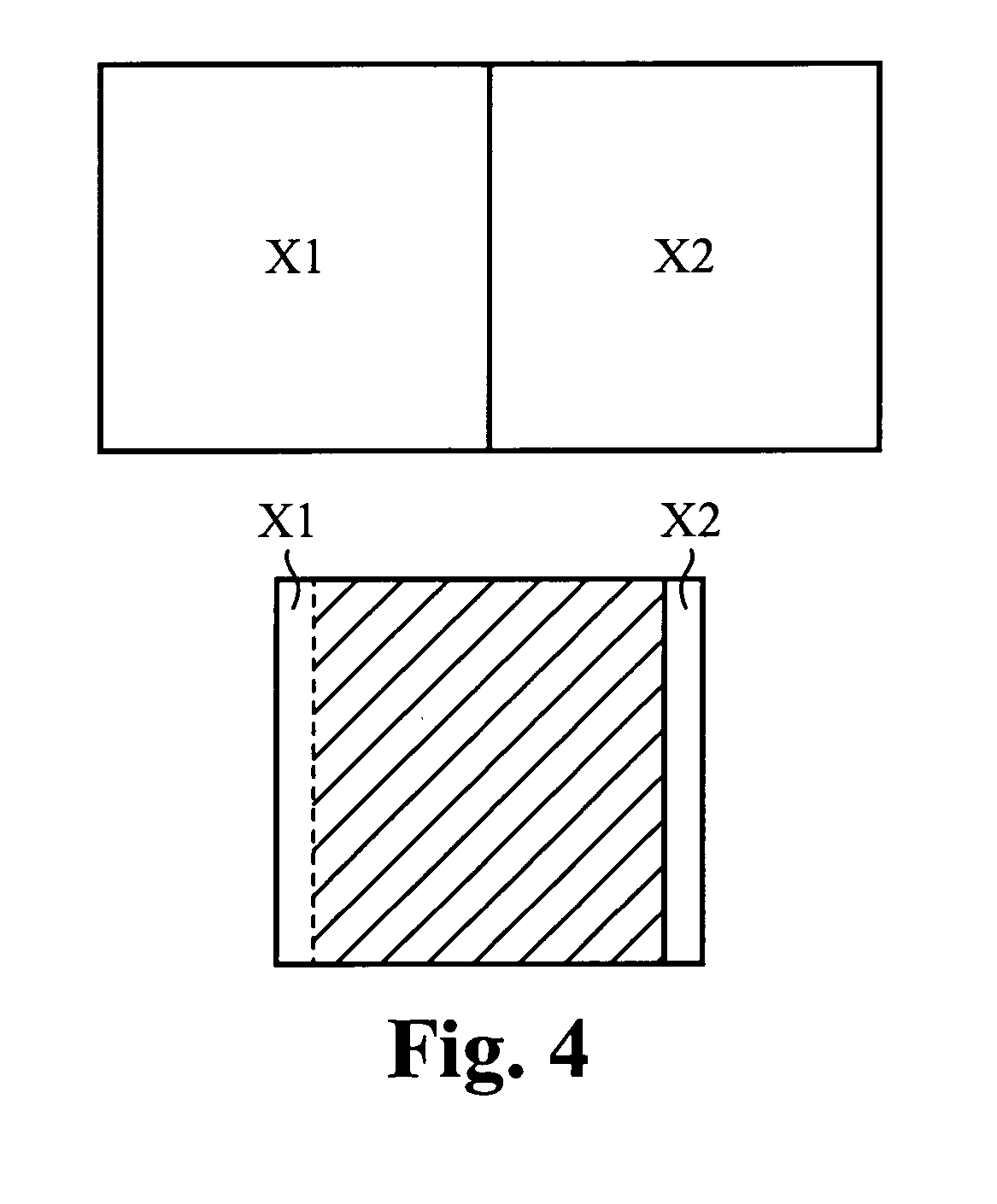Method of estimating noise in spatial filtering of images
a spatial filtering and noise estimation technology, applied in image enhancement, image analysis, instruments, etc., can solve the problem that their work did not address the problem of propagating noise varian
- Summary
- Abstract
- Description
- Claims
- Application Information
AI Technical Summary
Problems solved by technology
Method used
Image
Examples
Embodiment Construction
[0022] Generating an output noise model to predict the output noise variance is integral to designing an image capturing device. For a given input noise variance, predicting the impact of spatial filtering on the input noise variance provides a component of the output noise model.
[0023] In general, an image is composed of a number of pixel elements arranged in a lattice, also referred to as a finite difference grid. FIG. 1 illustrates an exemplary lattice for a given image X. Each pixel x(i,j) within the image X is designated by its row position and column position within the lattice, where the size of the lattice is I×J. An image capturing device measures the signals at each pixel, and as such, each measured pixel is a discrete point, not a continuous coverage of the image space. At each pixel point, the signal is considered independently. By considering each pixel point within the image, an output for the entire image is determined.
[0024] Linear spatial filtering is based on two...
PUM
 Login to View More
Login to View More Abstract
Description
Claims
Application Information
 Login to View More
Login to View More - R&D
- Intellectual Property
- Life Sciences
- Materials
- Tech Scout
- Unparalleled Data Quality
- Higher Quality Content
- 60% Fewer Hallucinations
Browse by: Latest US Patents, China's latest patents, Technical Efficacy Thesaurus, Application Domain, Technology Topic, Popular Technical Reports.
© 2025 PatSnap. All rights reserved.Legal|Privacy policy|Modern Slavery Act Transparency Statement|Sitemap|About US| Contact US: help@patsnap.com



